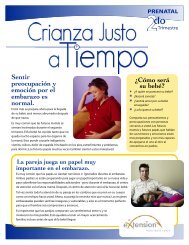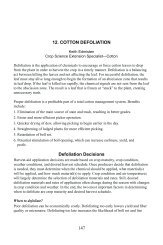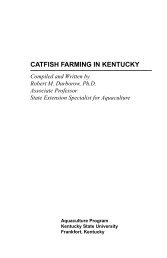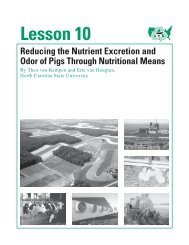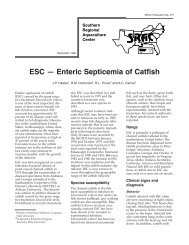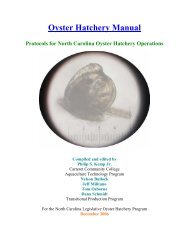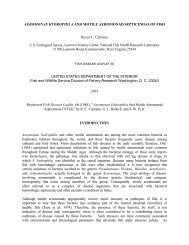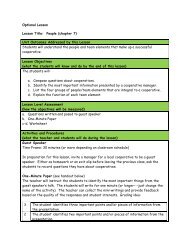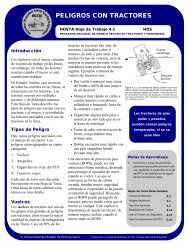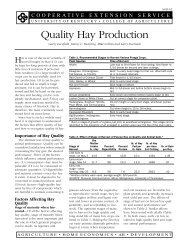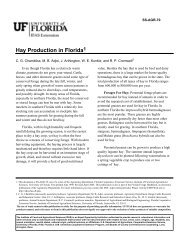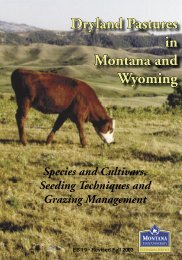Recognizing the Good Bugs in Cotton - Texas Is Cotton Country ...
Recognizing the Good Bugs in Cotton - Texas Is Cotton Country ...
Recognizing the Good Bugs in Cotton - Texas Is Cotton Country ...
Create successful ePaper yourself
Turn your PDF publications into a flip-book with our unique Google optimized e-Paper software.
Microplitis<br />
croceipes<br />
Family: Braconidae<br />
Characteristics: Adults are large dark brown<br />
to black wasps about 1/3 <strong>in</strong>ch long. The<br />
abdomen and legs are yellow to red and <strong>the</strong><br />
w<strong>in</strong>gs are dark. The cocoons are off white<br />
to yellowish and smooth with long ridges.<br />
M. croceipes is found throughout <strong>the</strong> <strong>Cotton</strong><br />
Belt except it is not reported from<br />
California.<br />
Hosts: In some areas, M. croceipes is one of<br />
<strong>the</strong> most common parasites of bollworm larvae<br />
<strong>in</strong> cotton. As many as 50 percent of<br />
bollworm larvae may be parasitized by this<br />
wasp. All stages of larvae are attacked but<br />
3rd and 4th <strong>in</strong>stars are preferred. Budworm<br />
larvae are also parasitized. M. croceipes parasitizes<br />
bollworms <strong>in</strong>fest<strong>in</strong>g alfalfa,<br />
sorghum, tomato, wild hosts and corn <strong>in</strong><br />
<strong>the</strong> whorl stage but not <strong>in</strong> <strong>the</strong> ear stage.<br />
General Biology: The adult female st<strong>in</strong>gs<br />
<strong>the</strong> bollworm larva and deposits her eggs<br />
<strong>in</strong>side <strong>the</strong> caterpillar. Third <strong>in</strong>star larvae are<br />
most commonly parasitized. Larger larvae<br />
often drive off <strong>the</strong> parasite before it can<br />
st<strong>in</strong>g. The wasp’s egg hatches <strong>in</strong>to a grub<br />
which feeds <strong>in</strong>side <strong>the</strong> bollworm for about 8<br />
days. The parasitized bollworm soon stops<br />
feed<strong>in</strong>g. Once full grown, <strong>the</strong> wasp grub<br />
bores out of <strong>the</strong> dead bollworm and sp<strong>in</strong>s a<br />
white cocoon. The adult wasp emerges from<br />
<strong>the</strong> cocoon <strong>in</strong> about a week. Development<br />
from egg to adult requires about 15 days at<br />
86°F. There are 3 or 4 generations per year<br />
90



